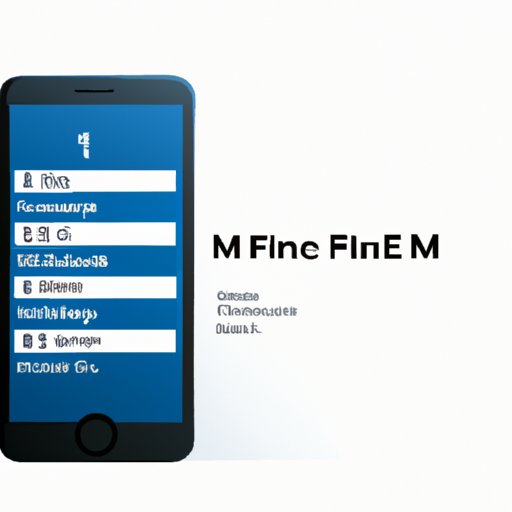Introduction
M1 Finance is an online brokerage that has been growing in popularity since its launch in 2017. It is a blend of traditional investing and automated investing, offering users the ability to create custom portfolios with no minimum balance or commissions. In this article, we will explore what makes M1 Finance a brokerage, how it compares to other popular brokerages, and how to use it for investing.
What is M1 Finance?
M1 Finance is a digital investment platform founded in 2017. It combines the best of traditional and automated investing, allowing users to build custom portfolios using stocks and ETFs. M1 Finance offers a range of account types, including individual taxable accounts, joint accounts, Roth IRAs, SEP IRAs, and more. There are no minimum balances or commissions, and users can access research tools and portfolio management tools to help them make informed decisions.
Overview of M1 Finance as a Brokerage
M1 Finance is a brokerage, meaning it allows investors to buy and sell securities such as stocks, ETFs, and mutual funds. It is a hybrid between traditional and automated investing, which means users have the flexibility to customize their portfolios while taking advantage of automated investing features. M1 Finance also offers fractional shares, which makes it easier for investors to diversify their portfolios without having to invest large amounts of money.
Comparing M1 Finance and Other Popular Brokerages
When comparing M1 Finance to other popular brokerages, there are several benefits and drawbacks to consider. Let’s take a closer look at how M1 Finance stacks up against its competitors.
Benefits of M1 Finance Compared to Other Brokerages
One of the major benefits of M1 Finance compared to other brokerages is its low fees and commissions. Unlike most brokerages, M1 Finance does not charge any trading fees or commissions. This makes it a great option for those who want to invest without having to worry about paying high fees.
M1 Finance also has a wide range of account types, from individual taxable accounts to Roth IRAs and SEP IRAs. This makes it easy for investors to find the right account type for their needs.
Drawbacks of M1 Finance Compared to Other Brokerages
The main drawback of M1 Finance compared to other brokerages is its lack of research tools. While M1 Finance has some basic research tools, they are not as comprehensive as those offered by other brokerages. Additionally, M1 Finance does not offer the same level of customer service as other brokerages.
Investing with M1 Finance: What to Know Before You Start
Before you start investing with M1 Finance, there are a few things you should know. Here is an overview of the different account types, fees and commissions, and security features offered by M1 Finance.
Account Types
M1 Finance offers a variety of account types, including individual taxable accounts, joint accounts, Roth IRAs, SEP IRAs, and trusts. Each account type comes with its own set of features and benefits, so it’s important to choose the one that best suits your needs.
Fees and Commissions
Unlike most brokerages, M1 Finance does not charge any trading fees or commissions. This makes it a great option for those who want to invest without having to worry about paying high fees.
Security Features
M1 Finance takes security seriously. All accounts are protected by 256-bit encryption, two-factor authentication, and advanced fraud protection measures. Additionally, M1 Finance is a member of the Securities Investor Protection Corporation (SIPC), which provides additional protection for investors.
Pros & Cons of M1 Finance as a Brokerage
Now that you have a better understanding of M1 Finance as a brokerage, let’s take a look at the pros and cons of using it.
Pros
- No trading fees or commissions
- Wide range of account types
- Advanced security features
- Fractional share investing
Cons
- Limited research tools
- Lack of customer service
- Limited options for international investments

How M1 Finance Stacks Up Against Traditional Brokerages
When comparing M1 Finance to traditional brokerages, there are both advantages and disadvantages to consider.
Advantages of M1 Finance Over Traditional Brokerages
- No trading fees or commissions
- Fractional share investing
- Easy to use platform
- Robust security features
Disadvantages of M1 Finance Compared to Traditional Brokerages
- Limited research tools
- Lack of customer service
- No international investments

A Comprehensive Guide to Using M1 Finance
M1 Finance is a powerful tool for investors, but it can be intimidating to get started. Here is a comprehensive guide to using M1 Finance, from setting up an account to placing orders and managing your portfolio.
Setting Up an Account
Setting up an account with M1 Finance is easy. Simply visit the website and click “Sign Up” to create an account. You will need to provide some basic information, such as your name, address, and Social Security number. Once you have filled out the form, you will be ready to start investing.
Placing Orders
Once you have set up your account, you can start placing orders. M1 Finance allows you to buy and sell stocks, ETFs, and mutual funds. You can either place orders manually or use automated investing features. If you choose to use automated investing, you can select from pre-set portfolios or create your own custom portfolio.
Research Tools
M1 Finance offers a range of research tools to help you make informed investing decisions. These include stock screening tools, historical data, and market news. However, these tools are not as comprehensive as those offered by other brokerages.
Portfolio Management
M1 Finance offers a range of portfolio management tools, including a portfolio analyzer, performance charts, and tax optimization features. These tools allow you to track and manage your investments, as well as optimize your portfolio for tax efficiency.

Investment Strategies for M1 Finance Users
M1 Finance offers a range of investment strategies that can help you maximize your returns. Here is a brief overview of some of the most popular strategies.
Asset Allocation Strategies
Asset allocation strategies involve dividing your investments among different asset classes, such as stocks, bonds, and cash. This helps to diversify your portfolio and reduce risk. M1 Finance offers several pre-set asset allocation strategies, as well as the ability to create your own customized strategy.
Tax Loss Harvesting
Tax loss harvesting is a strategy that involves selling investments that have declined in value to offset capital gains taxes. M1 Finance offers tax loss harvesting features that can help you save money on taxes.
Rebalancing Strategies
Rebalancing is a strategy that involves periodically adjusting your portfolio to maintain your desired asset allocation. M1 Finance offers several rebalancing tools that can help you keep your portfolio balanced and optimized for long-term growth.
Conclusion
M1 Finance is a powerful and easy-to-use brokerage that allows users to create custom portfolios with no minimum balance or commissions. It offers a range of account types, advanced security features, and fractional share investing. It also has a wide range of investment strategies, from asset allocation to tax loss harvesting and rebalancing. Whether you’re a beginner investor or an experienced trader, M1 Finance is a great choice for anyone looking to invest without having to worry about high fees and commissions.
(Note: Is this article not meeting your expectations? Do you have knowledge or insights to share? Unlock new opportunities and expand your reach by joining our authors team. Click Registration to join us and share your expertise with our readers.)
